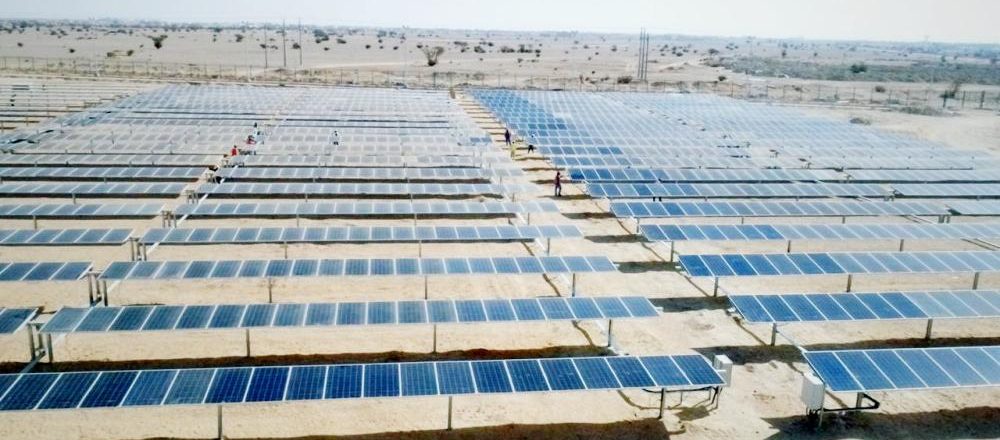The Layla Solar Plant project represents the first independent solar plant directly connected to the Saudi Arabian national grid for commercial operations. Taqnia energy thus becomes the first Saudi independent power producer (IPP), indicating a significant development in the country’s energy policy.
With the Saudi government's grandiose solar plans leading to market confusion and delays, the completion of phase 1 of the Layla plant represents a small step in the right direction in realising green energy aspirations for the irradiation rich country.
The project, with an area of 720,000 square meters, will have an initial production capacity of 10 MW during its first phase, with a further 40 MW set to be added.
Layla’s first phase will provide an estimated 10% of the energy needs for the province of Al-Aflaj, located 330 km from the Saudi capital of Riyadh. In a press release announcing the milestone, it was further stated that a 1.7-million-ton reduction in CO2 emissions is likely per year upon completion of the entire project.
The Layla Solar Plant was initiated through a joint venture between Taqnia Energy, the Saudi Electricity Company and King Abdulaziz City for Science and Technology. The Spanish engineering firm Typsa is responsible for designing and overseeing construction.
Popular content
Another point of note regarding the Layla project is that Taqnia Energy is also in the process of building a PV module assembly line, with an estimated annual capacity of 500 MW. The company has said this plant will be used for supplying the future development of Saudi solar projects. Similar growth of domestic solar technology production was also seen in this week’s announcements by Sipchem for the beginning of the firm’s mass production of EVA film.
Saudi Arabia has laid out targets to have 9.5 GW of solar and wind capacity created by 2030, equating to roughly 700 MW of additional installations per annum over the course of this goal. Under the Strategic Transformation Program, the country seeks to ration its uses of fossil fuels; improve energy efficiency; further roll out combined cycle power plants and to ramp up investment in renewable energy.
Although Saudi Arabia has set ambitious targets for renewable energy, little has been pragmatically realized in this regard, with many tenders being delayed over the last year. The Renewable Energy Project Development Office (REPDO) of Saudi Arabia announced proposals of tenders for 4.1 GW of renewable energy capacity in 2018, though these aspirations were not achieved.
The government has shown a strong reliance on large scale initiatives such as the planned 200 GW Softbank project for the country’s renewable energy goals, where this dependence could be impeding their energy targets, as recently reported in pv magazine.
This content is protected by copyright and may not be reused. If you want to cooperate with us and would like to reuse some of our content, please contact: editors@pv-magazine.com.


By submitting this form you agree to pv magazine using your data for the purposes of publishing your comment.
Your personal data will only be disclosed or otherwise transmitted to third parties for the purposes of spam filtering or if this is necessary for technical maintenance of the website. Any other transfer to third parties will not take place unless this is justified on the basis of applicable data protection regulations or if pv magazine is legally obliged to do so.
You may revoke this consent at any time with effect for the future, in which case your personal data will be deleted immediately. Otherwise, your data will be deleted if pv magazine has processed your request or the purpose of data storage is fulfilled.
Further information on data privacy can be found in our Data Protection Policy.